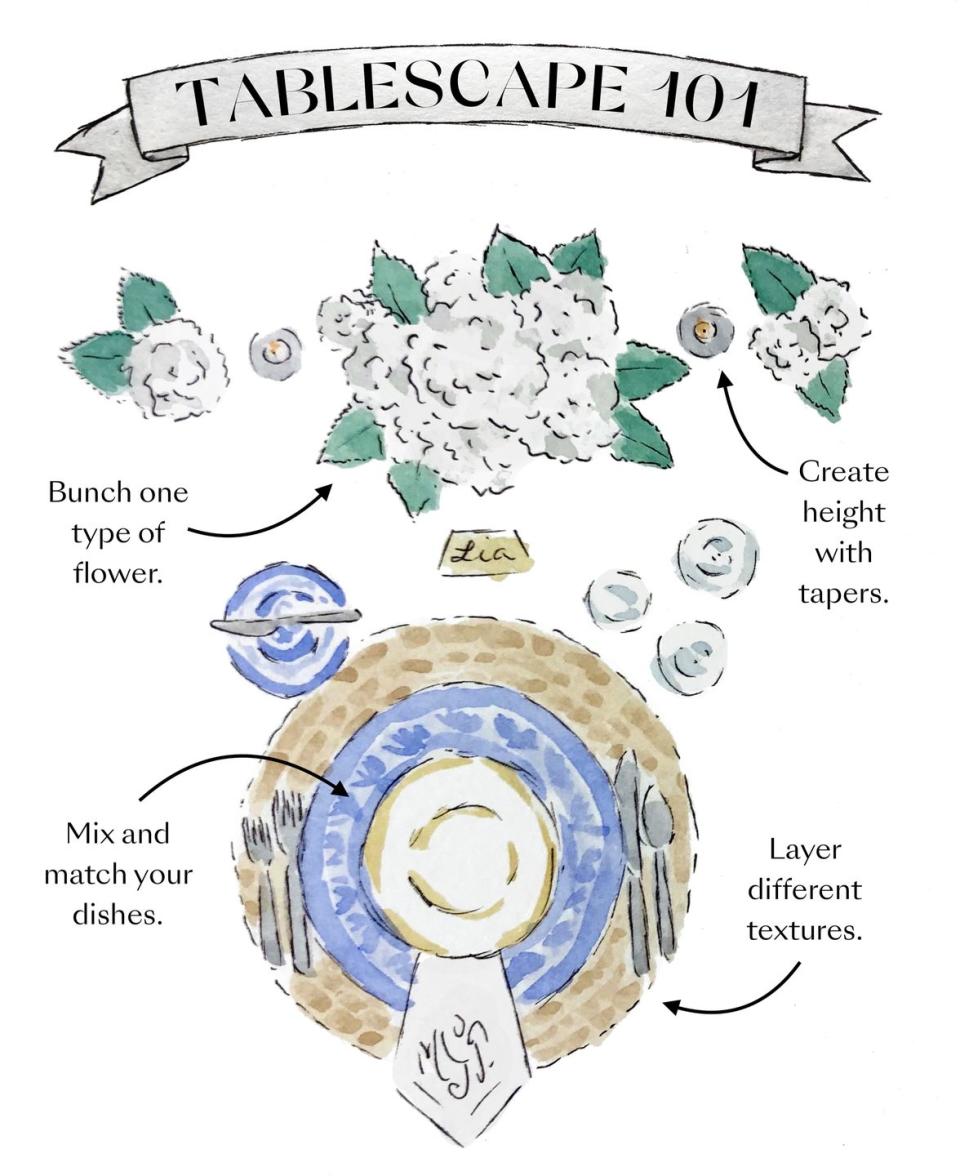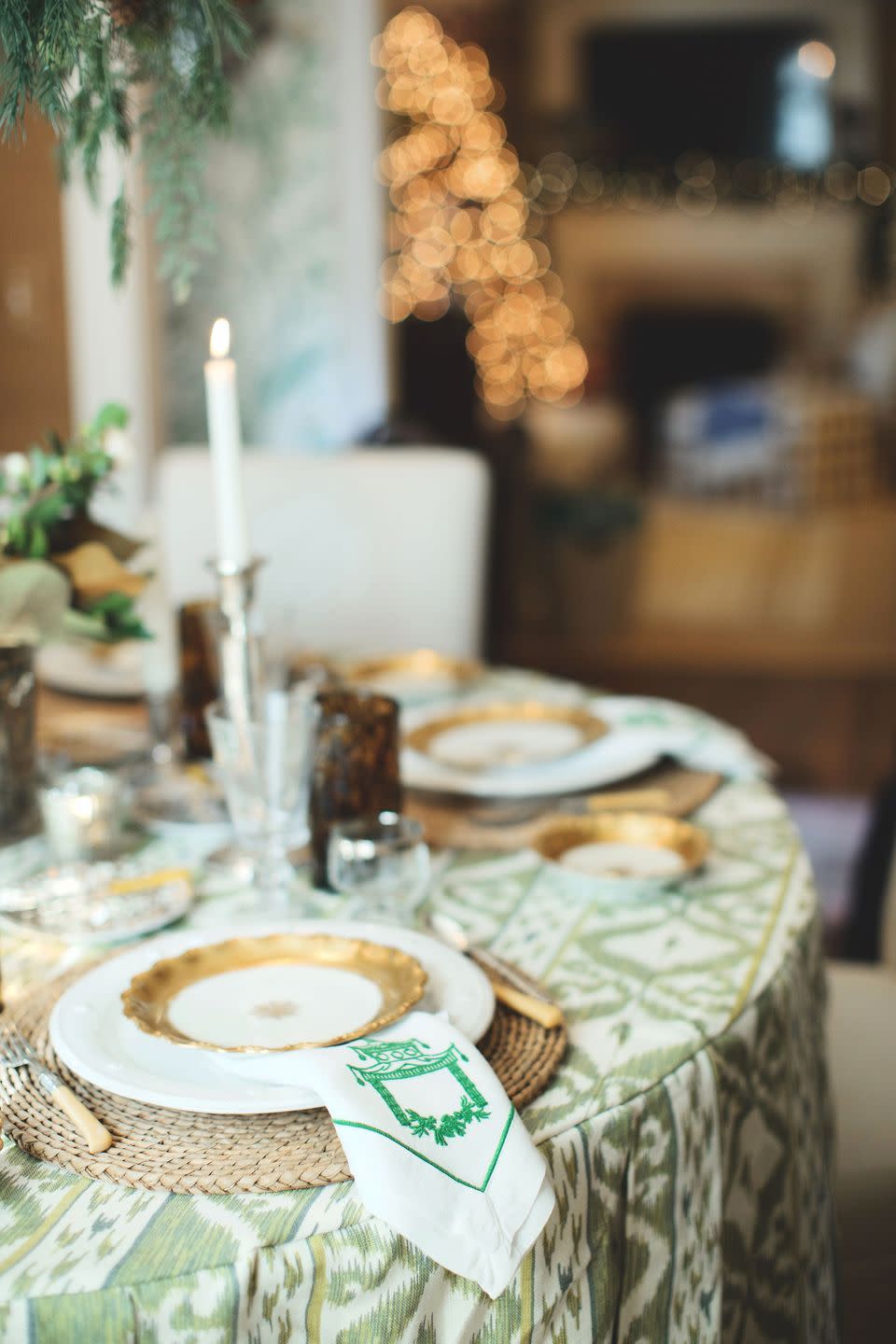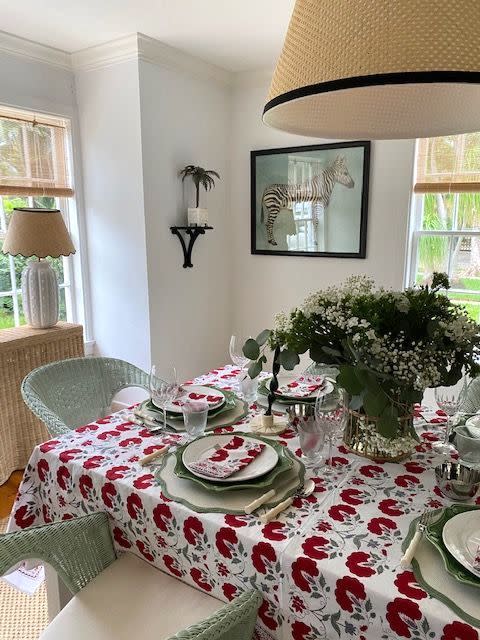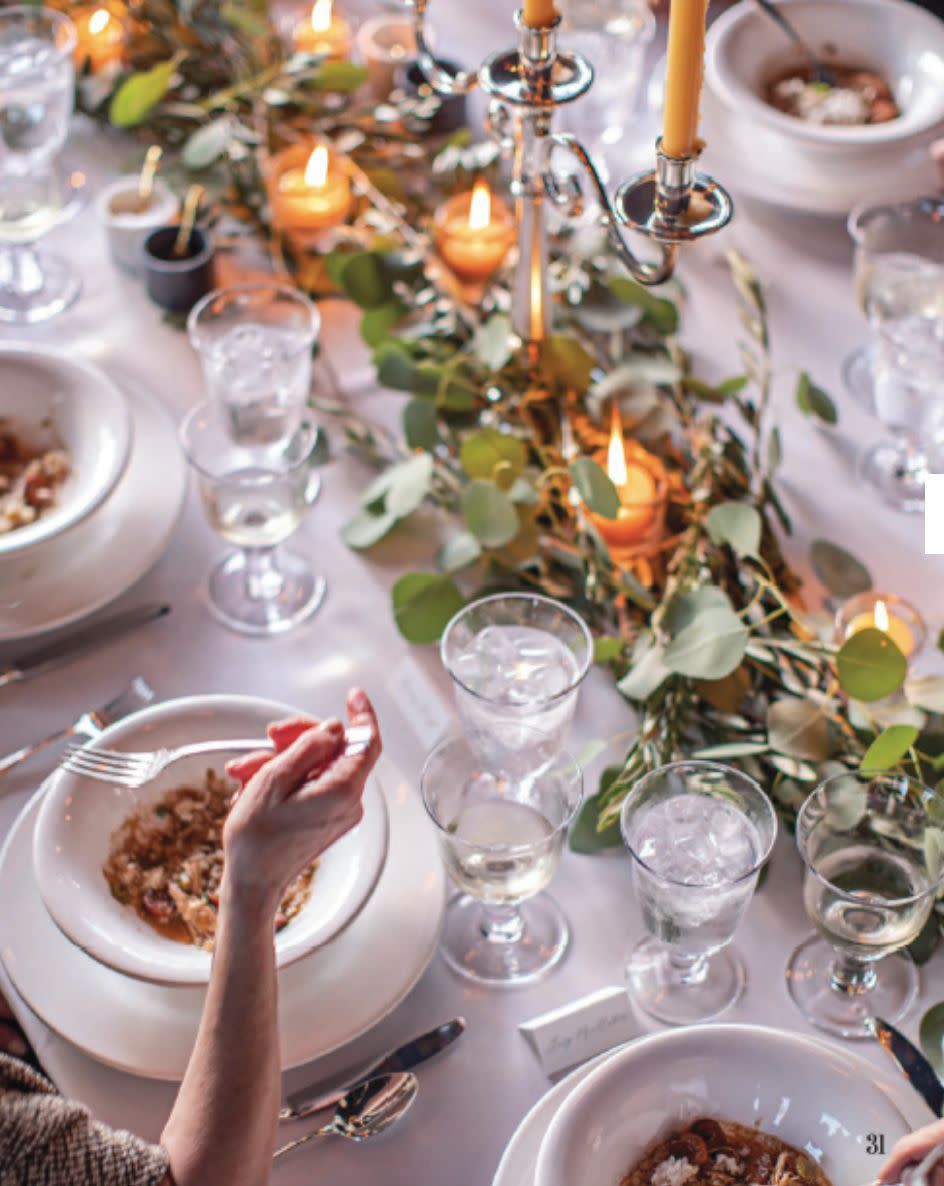The Beginner's Guide to Creating a Professional-Looking Tablescape
The holiday season is right around the corner, and this year, I'm finally tackling my biggest domestic challenge yet: the tablescape. Decked out in glitzy crystal and an elaborate floral arrangement set aglow with candlelight, a true designer tablescape is unquestionably swoon-worthy—but do one myself? Way too intimidating.
But if there's ever been a time to embrace the tablescape, it's right now. Most of my recent dining has been at home, at the table where I feed my toddler macaroni and cheese every night; with many of us not traveling or seeing family for the holidays, our celebratory dinners may not feel that out of the ordinary. Our holiday meals deserves a little pomp, and I’ve never wanted to lean into it more.
A beautifully set table isn't just pretty to look at: It gives diners a mood boost, too, says Emily Painter, founder of tabletop rental company Freshly Set. “It’s especially important now that things have changed a bit and we’re having smaller groups. Even if it’s not a big event, you can still make it feel intimate and special," she advises.
With the right approach, creating a tablescape that’s a little bit glamorous and whimsical isn’t as hard as it looks.

Step 1: Plan Ahead
First things first: Approach tablescape design the way you would a room, suggests Georgia-based interior designer Maggie Griffin. Consider the size and shape of the table—a round table, for example, calls for a low centerpiece, while a rectangular table is better suited for a linear one.

Another thing to take into consideration is the type of event that you’re hosting. Annette Joseph, stylist and author of the forthcoming La Fortezza Cookbook, says to think about what you’ll be serving, and where you’ll be serving it. If you’re hosting a casual daytime gathering in the backyard, for example, you might want to skip the tablecloth and opt for a bright color palette. You'll also want to think about what sort of platters you’ll need to use and account for where they'll go when scheming your table, so you won't end up having to move everything around when the food is ready.
If have time, you may want to put your tablescape together a couple of days before your event. This allows you to arrange the table to your liking and do adjustments without the added pressure of guests coming over in a few hours.
Step 2: Pick the Right Backdrop
Tablecloths obviously take up the largest amount of space on your table and will set the tone of your tablescape. “Even if you have plain white china and regular glasses, the look can totally change depending on what tablecloth you have and what pattern you choose. And it’s the easiest way to make a statement,” says Painter.

If you have a round table, consider layering tablecloths: Use a round tablecloth that falls to the ground (bonus points for added drama) as the base layer, then add a square topper. “For several of my clients, we've had made a very inexpensive linen tablecloth made for the base, then we use a really punchy high-end fabric to make these square toppers," says Griffin. "It doesn't require as much yardage."
Table runners also add another dimension to your tablescape, but it’s key to choose one that contrasts with your tablecloth. If you’re using a solid color tablecloth, try a runner in a bold pattern. You can even think outside the box, says Joseph, and make a runner with an unconventional material like wrapping paper.
Step 3: Layer, Layer, Layer
One way that Griffin likes to add texture and dimension to her table is by using rattan placemats at each place setting. Rattan adds a natural element to the table and contrasts nicely from a patterned tablecloth.
Set your dishes, silverware, and glasses according to the rules of etiquette — if you’re not sure, check out this helpful guide to what goes where. Don’t be afraid to mix and match your dishes from different sets and patterns. By doing this, “you create this great visual of layering that makes you excited even before the meal,” says Griffin.
When it comes to napkins, Emily Hecht of Gather Picnic Co. in Atlanta suggests matching the folding style to the formality of the event. “Something we do a lot with Gather is a very casual, almost rustic looking knot. We usually tie them that way for a more relaxed feel,” she says. If you want something a little more interesting than a napkin ring for a formal look, try folding your napkins and arranging them under the charger or between the dishes on the place setting. This gives the napkin a “waterfall” look and adds an interesting visual element to the table.

Step 4: Accessorize with Flowers
Flowers are a non-negotiable element of any tablescape, but they don’t need to be elaborate to make a statement. If you find floral arrangement daunting, or you’re trying to watch your budget, stick with just one type of flower, says Joseph: “What you want is to create an impact, and more is more." For an easy centerpiece, she suggests buying three bunches of roses and filling a decorative tureen with them. You can also divide the flowers up among small vases and arrange them down the table interspersed with candles.

Another thing to keep in mind when choosing flowers is seasonality, says Griffin. While you can buy almost any kind of flower you want throughout the year, you should resist the urge to throw hydrangeas into your autumn or winter tablescape. Instead, head outside to forage for leaves and branches. “Pulling things from the yard is an easy way to not spend anything and still create some lush kind of greenery texture in the middle of your table,” says Griffin. Incorporating herbs like rosemary makes the table feel fresh, too.
For a boho flair, Hecht likes to use dried flowers, which you can find at most local flower shops or on Etsy. “We use a lot of pink and neutral, weedy-type dried flowers, like Bunny Tails and dried wheat, and sometimes throw in fresh ranunculus,” she says.
Step 5: Add Height
Vertical interest is what sets a true tablescape apart from an everyday table setting. One of the best ways to add height is with taper candles and candlesticks. “They’re fun because you can mix in different materials—add some silver, some brass, even some ceramic,” says Griffin. She also suggests varying the heights of the candles and interspersing them with lower votives. More tapers equals more drama, but even just adding two or four can add flair.
Another way to add height—and sparkle—is with glassware. Setting the table with champagne flutes, wine glasses, and cordial glasses will provide more dimension (and give you an excuse to dust off all the bottles on your bar cart).

Step 6: Don't Forget the Details
Finally, consider a few small additions that make a table feel extra personal, like handwritten place cards. “A handwritten menu card on top of your dinner plate is also such a fun way to give your tablescape more personality,” says Griffin. It also makes a great souvenir for guests to take home!
Follow House Beautiful on Instagram.
You Might Also Like

